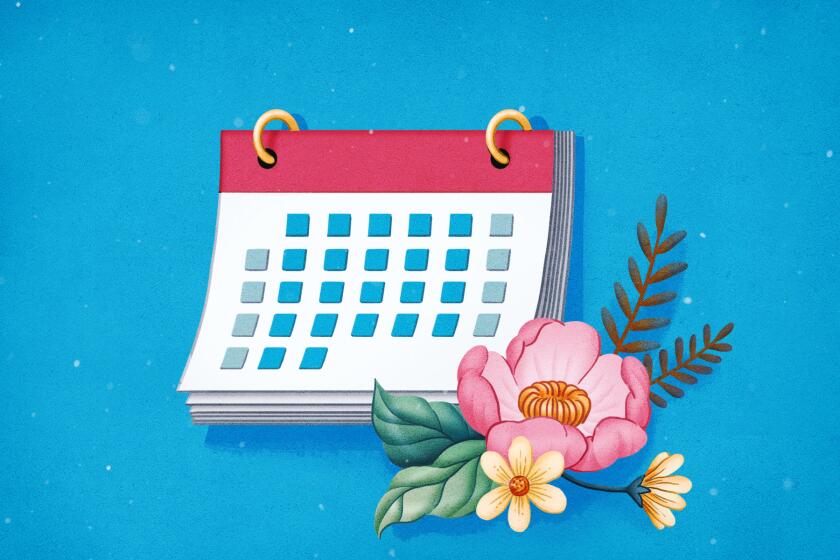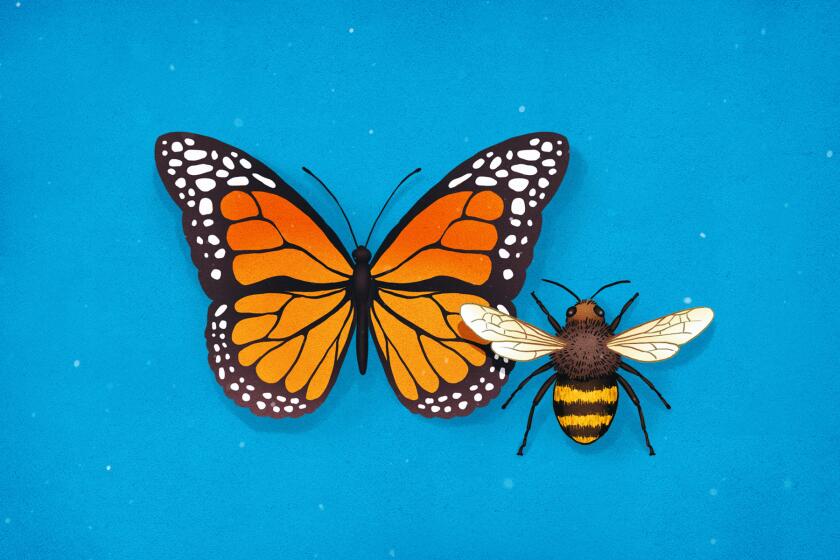Finally, something good in 2020: A superbloom of roses
- Share via
It’s not your imagination. This has been a tremendous spring for rose blooms — the best since 2017 — and if you work now, you can keep that show going until the fall, says guru Tom Carruth.
“It was something about the weather conditions, all that late rain, but this spring has been an especially profuse bloom for roses, and lots of other plants too,” said Carruth, a longtime rose breeder. He’s now the curator and chief booster of the rose garden at the Huntington Library, Art Museum and Botanic Gardens, which features more than 2,700 rose plants.
Carruth has been posting drool-worthy photos of the famed garden all spring on Instagram and Twitter (@TomCarruthRoses), including a short history or trivia lesson about each rose. But the posts all have a wistful quality, because no one can come into the gardens to enjoy the roses’ splendor. Carruth and limited staff are still working in the gardens — wearing face masks and maintaining social distance — but the rose garden is usually packed with eager camera-wielding visitors during the spring bloom.
An annual is a plant that lives and dies in one growing season. A perennial regrows year after year. You should have both in your garden, and here’s why.
“I really miss sharing the beauty of our garden with our visitors and volunteers,” he said in Verso, the Huntington’s online blog. And it’s frustrating, he said, that the volunteers who did so much pruning in January and February can’t enter the garden now.
“They’ve all worked so hard,” he said in Verso. “I know they’re feeling very blue that they can’t be here to see the fruits of their labors.”
In his first professional life, as a hybridizer for Weeks Roses, Carruth created at least 125 new varieties, so chances are you have one of his roses in your garden. Needless to say, he has a fair amount of rose cred, so here are his top tips for keeping the bloom fest going all summer long:
Most of Southern California’s botanic gardens closed in March but are now slowly reopening, with new rules about wearing face coverings, buying tickets online and bringing your own water.
1. Feeding time
Once the first spring bloom has finished, give your roses a boost with some fertilizer. Carruth uses an organic foliar spray on the Huntington’s roses to feed the plants through their leaves. The Huntington Foliar Fertilizer Mix is one gallon of water with 1 teaspoon of Verde (Humboldt Nutrients V405), 1 teaspoon of Jump Start Plant Tonic (Grow More 7436) and ½ tablespoon of Seaweed Extract (Grow More 6048) or any organic liquid kelp fertilizer. Saturate the plants with the mix now, in the early morning, when the temperatures are below under 85 degrees, Carruth said, and again in late August, to continue blooms into the fall.
2. Deadhead
Once the blooms are gone, cut back the stems to encourage new growth and flowers, Carruth said. Some people just snap the spent flowers off the stems, but Carruth said you’ll have stronger plants and blooms if you cut further down the stem. His rule of thumb? “Look where the stem starts and where it finishes and cut it in half,” he said. “And don’t be afraid to shape your plant a little while deadheading. If you have a branch that sticks you in the butt when you get out of the car, cut it down.”
What plants will fill your yard with happy bees and butterflies? These six species are musts.
3. Watch the weather
If the temperatures start heading toward 100 and above, that’s the time to start spraying for chile thrips, a tiny little sap-sucking pest that thrives in hot, dry conditions. The thrips love tender new growth, but they will deform flowers and leaves on a variety of plants, including roses, once they become established, Carruth said. The only effective remedy he’s found is a pesticide with spinosad as the active ingredient. “Shop around for the one with the highest concentration,” he said. “Watch the weather, and the day before it gets really hot, just spray it on the growing tips of the plant late in the day or in the early evening, after the bees have gone home, because it can be problematic for bees.”
4. Water at dawn
The common advice for roses is to water at the roots, to keep mildew from forming on the leaves, but Carruth said he’s found that mildew isn’t a big problem during Southern California’s hot summers. These days all the roses at the Huntington are watered with sprinklers about 3 feet tall, to wash dust off the roses, which helps deter spider mites as well. They water for 20 minutes total, two times a week, but the watering sessions are broken into two 10-minute cycles with an hour or two rest in between to avoid runoff and give the water a chance to soak into the soil. In summer the schedule is increased to three 20-minute sessions a week.
More to Read
Sign up for The Wild
We’ll help you find the best places to hike, bike and run, as well as the perfect silent spots for meditation and yoga.
You may occasionally receive promotional content from the Los Angeles Times.













